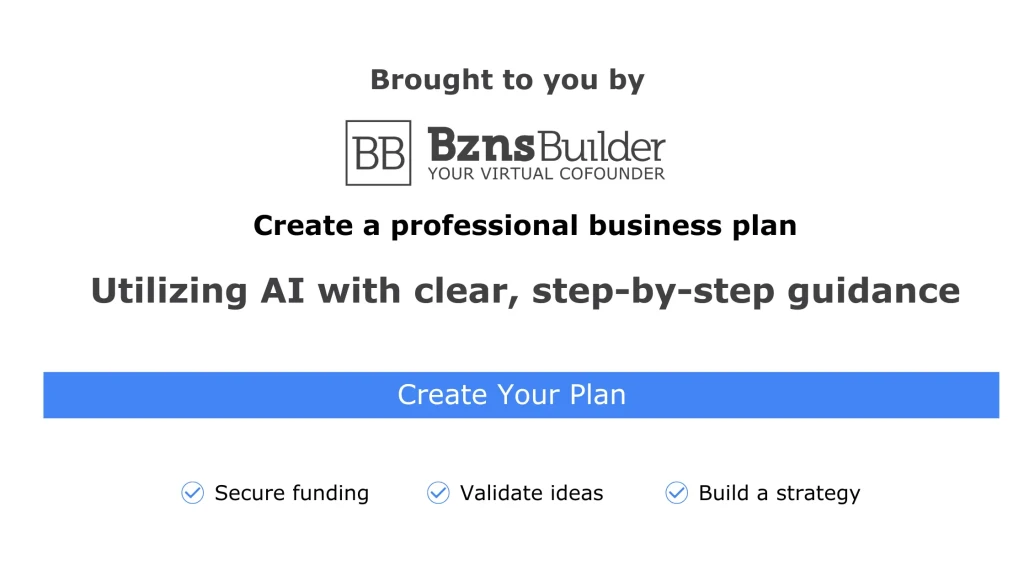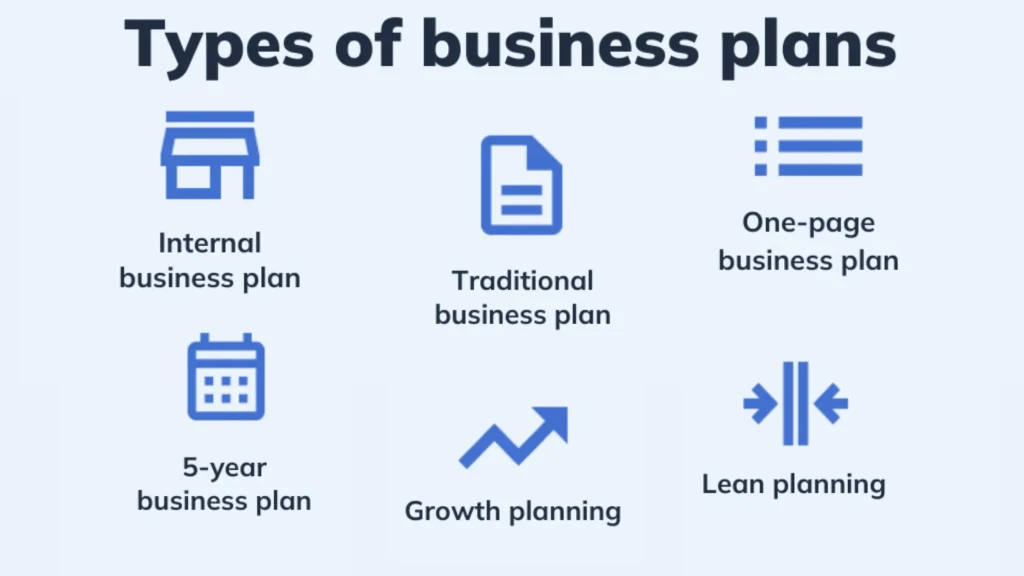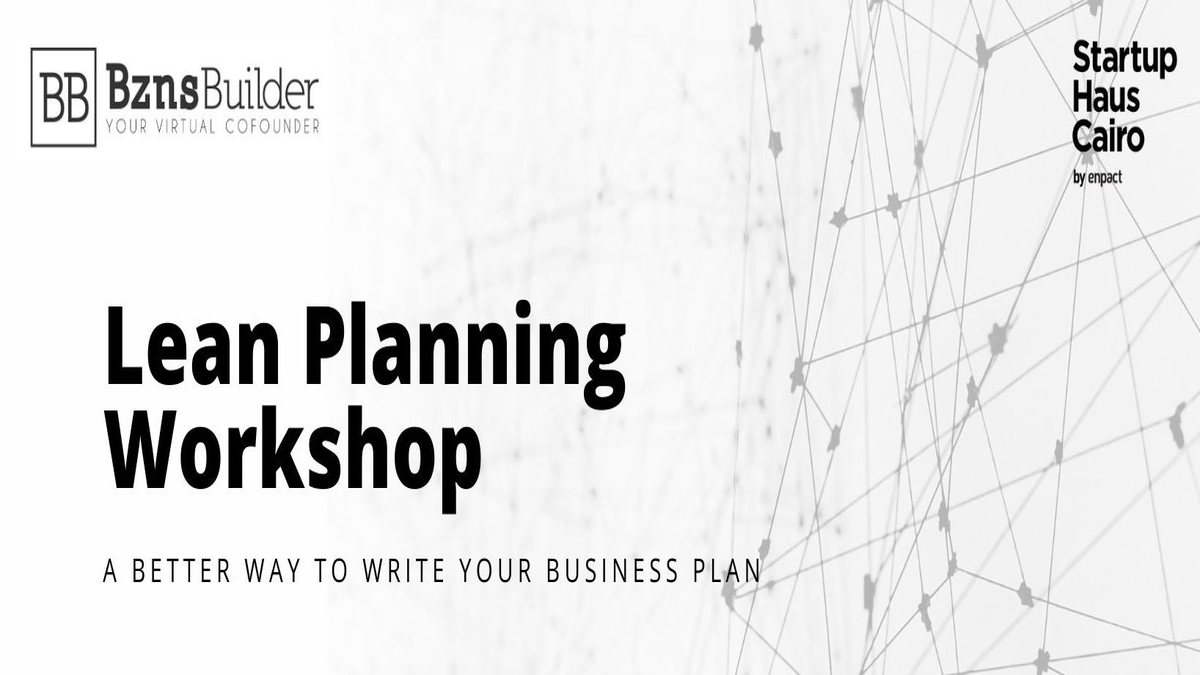Exploring the 7 Types of Business Plans

Business plans often go by various names—strategic plans, traditional plans, operational plans, feasibility plans, internal plans, growth plans, and more. Each serves a unique purpose, tailored to specific business needs and situations.
But what sets these plans apart? Why should you choose one type over another?
In this article, we’ll guide you through a simple process to identify the ideal business plan for your goals. Plus, we’ll provide a quick overview of each type, so you can make an informed decision.
Let’s dive in and find the perfect planning format for your business!
1. Understand Why You Need a Business Plan
What’s the purpose behind creating your business plan? Are you pitching to investors, applying for a loan, or evaluating the feasibility of your business idea?
The reason for your plan will directly influence the type and structure you choose. For instance, a comprehensive and detailed plan is essential when seeking investment or financing, as it demonstrates thorough preparation and credibility. However, if you’re simply testing an idea, a concise and streamlined plan might be more practical and efficient.
Clarifying your objective will help you choose a plan that aligns with your goals and saves you valuable time and effort.
2. Become familiar with your options
You don’t need to become a planning expert and understand every detail about every type of plan. You just need to know the basics:
- What makes this type of plan unique?
- What are its benefits?
- What are its drawbacks?
- Which types of businesses typically use it?
By taking the time to review, you’ll understand what you’re getting into and be more likely to complete your plan. Plus, you’ll come away with a document built with your use case(s) in mind—meaning you won’t have to restart to make it a valuable tool.
3. Start Small and Build as You Go
When selecting a business plan format, consider starting with a shorter, simpler option and expanding it over time. This approach saves effort while still giving you a functional business plan that meets your immediate needs.
Starting small also provides clarity on additional planning requirements as your business evolves, eliminating the need to start from scratch.
Remember, the best business plan depends on your unique situation and goals. Taking this step-by-step approach will help you focus and narrow down your options effectively.
Now, let’s dive into the common types of business plans you can choose from!
Traditional Business Plan
The traditional business plan, also known as the standard business plan, is a comprehensive document that provides an in-depth overview of your business. It’s the most widely used format and is ideal for situations that require detailed information, such as pitching to investors or applying for loans.
This type of plan is typically divided into 10 sections:
- Executive Summary
A concise overview of your business, including its mission, vision, and key objectives. - Description of Products and Services
Details about what you offer, highlighting unique features and benefits. - Market Analysis
Insights into your target market, customer demographics, and industry trends. - Competitive Analysis
A thorough evaluation of your competitors and your strategy to differentiate. - Marketing and Sales Plan
Strategies for promoting your business and converting leads into customers. - Business Operations
An outline of how your business will function daily, including logistics and processes. - Key Milestones and Metrics
A roadmap of your goals and the benchmarks you’ll use to measure success. - Organization and Management Team
Details about your team, their roles, and their expertise. - Financial Plan
Projections of revenue, expenses, cash flow, and funding requirements. - Appendix
Additional supporting documents, such as resumes, legal agreements, or product images.
This comprehensive approach ensures you’ve covered all critical aspects, making it a reliable choice for thorough business planning.
Why use this type of plan?
A traditional business plan is best for anyone approaching specific business planning events—such as presenting a business plan to a bank or investor for funding.
A traditional plan can also be useful if you need to add more details around specific business areas.
For example: You start as a solopreneur and don’t immediately need to define your team structure. But eventually you hit a threshold where you need more staff in order to keep growing. A great way to explore which roles you need and how they will function is by fleshing out the organization and management section.
That’s the unseen value of a more detailed plan like this. While you can follow the structure outlined above and create an in-depth plan ready for funding, you can also choose which sections to prioritize.
One-Page Business Plan
The one-page business plan is a streamlined version of the traditional business plan, offering simplicity without compromising usefulness. It’s quick to create, easy to read, and can even double as a pitch document for potential stakeholders.
Despite its brevity, it covers the essential aspects of your business. Here’s how the information is typically organized:
- Value Proposition
A clear statement of what makes your business unique and the value it provides. - Market Need
An explanation of the problem your business solves. - Your Solution
A concise description of your product or service and how it addresses the market need. - Competition
A summary of your key competitors and your competitive advantage. - Target Market
An outline of your ideal customers and their demographics. - Sales and Marketing
A high-level overview of your strategy to attract and retain customers. - Budget and Sales Goals
Estimated financial requirements and your sales targets. - Milestones
Key goals and deadlines for your business growth. - Team Summary
A snapshot of your team and their expertise. - Key Partners
A list of crucial collaborators or suppliers that support your business. - Funding Needs
An overview of the financial support you require and how it will be used.
The one-page plan is perfect for early-stage entrepreneurs who need a practical, actionable document without getting bogged down in details.
Why Use a One-Page Plan?
A one-page business plan offers speed and simplicity without sacrificing clarity. You can create one in as little as 30 minutes, making it ideal for entrepreneurs exploring new ideas or updating their strategies.
This format covers all the essential details of a traditional plan but presents them in a concise, actionable way. If you’re testing a business idea or refining your goals, a one-page plan allows you to focus on what matters most while saving time.
Here’s when a one-page plan works best:
- Early-Stage Exploration: Perfect for brainstorming or outlining a new business idea.
- Strategy Updates: Quickly refresh your plan to reflect changes in direction.
- Pitching to Investors: A one-page plan is easier to digest and aligns with what investors typically prioritize.
Riham Abu Elinin, Founder and CEO of BznsBuilder, puts it best: “Investors aren’t looking for a novel—they’re looking for impact. A sharp executive summary, a powerful pitch, and rock-solid financials are your keys to grabbing their attention and securing their trust.”
However, there are times when a one-page plan may not suffice:
- Loan Applications: Lenders often require a more detailed business plan to assess risk thoroughly.
- Funding Readiness: While a one-page plan is useful for initial pitches, you’ll need a detailed plan to demonstrate preparedness and secure funding.
If funding isn’t part of your strategy, a one-page plan may be all you need. The key is to revisit it regularly to ensure you’re staying aligned with your business goals.
Next, we’ll dive into two unique processes to help you make the most of your one-page plan!
Why Use Lean Planning?
Lean planning is perfect for businesses that thrive on speed and adaptability. It enables teams to test assumptions, revise quickly, and move forward without unnecessary delays. The process is short, straightforward, and designed to align everyone around a clear, actionable plan.
This approach is especially popular among startups. At the early stages, businesses are primarily focused on validating whether their ideas are viable, rather than creating detailed, long-term plans. Lean planning allows them to:
- Experiment and iterate efficiently.
- Quickly identify what works and what doesn’t.
- Align teams without overcomplicating the process.
Drawbacks of Lean Planning
While lean planning is ideal for startups, its simplicity makes it less suited for ongoing management in established businesses. However, it can still be a valuable tool for testing new strategies or innovations within an existing framework.
If you need to stay agile and responsive, lean planning is an excellent choice for keeping momentum and driving progress.
Nonprofit Business Plan
A nonprofit business plan follows a similar structure to a traditional business plan but includes specific elements tailored to the unique needs of nonprofit organizations. While you’ll still cover key sections like strategy, financial projections, and team structure, the focus shifts toward mission-driven objectives and financial sustainability.
Key Differences in a Nonprofit Plan
In addition to traditional components, a nonprofit plan emphasizes:
- Fundraising Sources and Activities
Identify where your funding will come from—grants, donations, events, or sponsorships—and outline your strategies for securing these resources. - Alliances and Partnerships
Highlight collaborations with other organizations, businesses, or community groups that will strengthen your impact. - Promotion and Outreach Strategies
Explain how you’ll raise awareness about your mission and engage with your community to garner support.
Why Nonprofits Need a Plan
A solid business plan is essential for nonprofit organizations to:
- Set clear goals aligned with their mission.
- Track performance and financial health.
- Demonstrate organizational stability and competence to donors and investors.
Nonprofits don’t aim for profits but must remain financially sustainable to fulfill their mission. By using your business plan to showcase strong organization and financial responsibility, you’ll enhance your ability to attract donors, secure funding, and build lasting partnerships.
Your plan isn’t just a roadmap—it’s a tool to inspire confidence and build trust with your stakeholders.
Tools and Features to Simplify Your Business Planning
Table of Contents
- 1. Understand Why You Need a Business Plan
- 2. Become familiar with your options
- 3. Start Small and Build as You Go
- Traditional Business Plan
- One-Page Business Plan
- Why Use a One-Page Plan?
- Why Use Growth Planning?
- Internal Plan
- Why Use an Internal Plan?
- Key Differences in a Nonprofit Plan
- Why Nonprofits Need a Plan
- Tools and Features to Simplify Your Business Planning
- Why Start Now?









